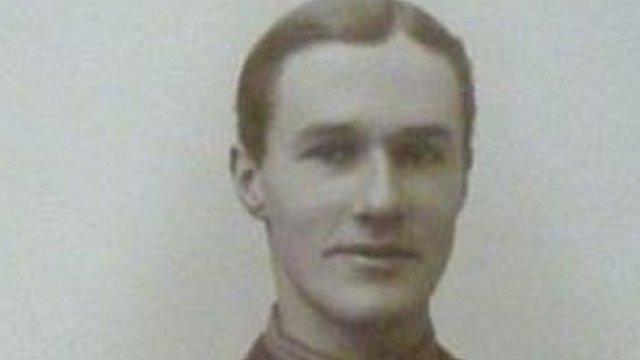The war unit spinning the truth in World War One
- Published
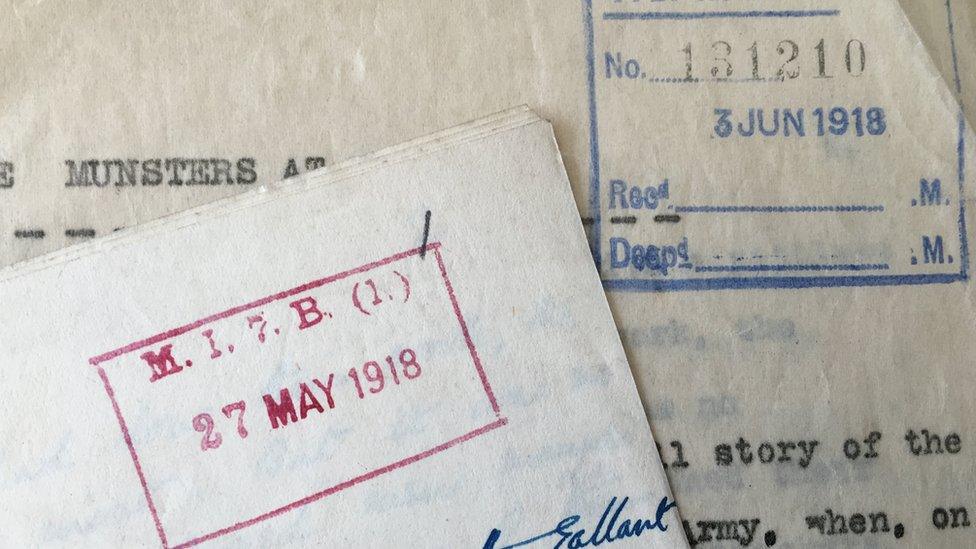
The work of MI7b was top secret, with most files destroyed after the First World War
It was a top secret unit whose mission was to spin the truth during World War One to keep up morale at home.
Twenty top-flight writers were recruited to work for the MI7b propaganda unit, including Winnie the Pooh author A.A. Milne.
From a building in central London they penned stories of heroic victories on the battlefield - even when the result was not that clear cut.
Their pieces were published in newspapers around the world and gave the impression of continued success, even when there were massive losses.
The government was keen to sustain support for the war when the number of soldiers being killed was rising.
As the First World War ended all evidence of the unit was destroyed and its work remained a mystery.
But, unknown to his bosses Capt James Lloyd, a vicar's son from Builth Wells in Powys who worked for MI7b, had kept 150 articles, and decades later they were discovered by his nephew Jeremy Arter.
Here are some excerpts.
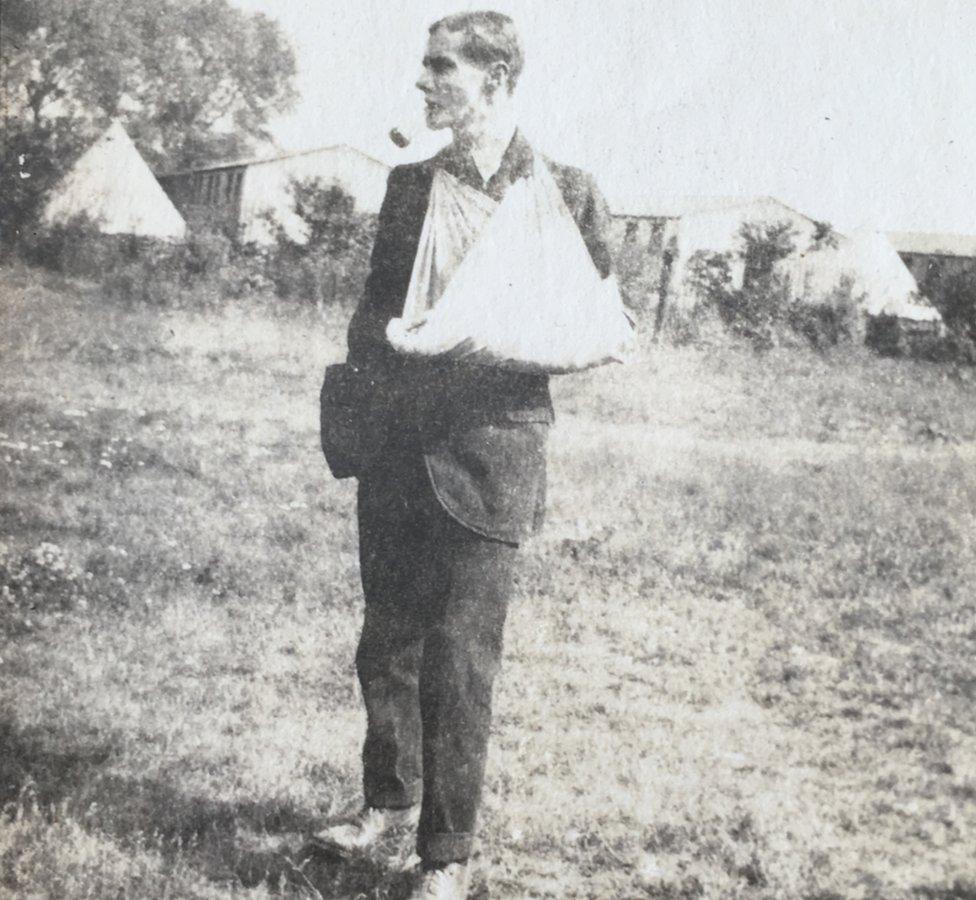
Capt Lloyd was recruited while recuperating after he was shot serving at the battle of Mametz Wood

In this compelling account of the Battle of Neuve Chapelle it is claimed there were 20,000 German casualties, now it is believed the figure was 10,000, while Allied troops suffered 7,000 British and 4,200 Indian casualties
Fighting in the Dumas country
These huge plains, where roads fringed with poplars pass through well-tilled fields, are a sticking contrast to the industrial districts further north and the dismal slag-heaps beyond Bethune.
They are famous, too, for other things than war; for this is the Dumas country.
...On the 10th of March 1915 began the battle which will go down to history as the battle of Neuve Chapelle, and which, if the luck of the weather had been with the British, might have resulted in the capture of the Aubers Ridge, and the opening up of the road to Lille.
The artillery preparation had been on a vaster scale, it was said, than ever before, and it was calculated that there was a greater expenditure of ammunition in the three days of this battle than there had been in a year-and-a-half of the South African War.
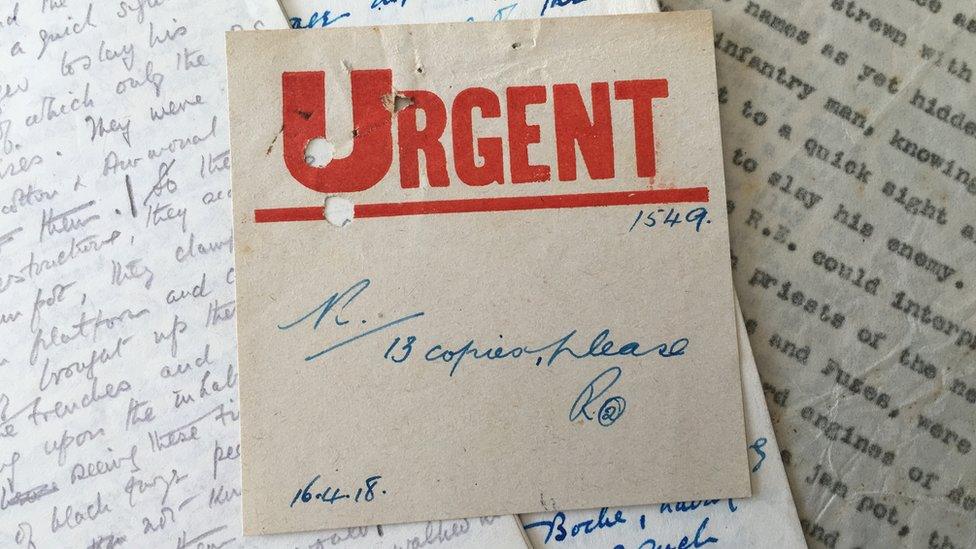
The hand-written documents were checked through before being typed up and copied for distribution
By the 12th of March the British had penetrated the German defences to a depth of one mile (1.6km) on a front of three (5km) miles, they had captured the village of Neuve Chapelle, had taken some 2,000 prisoners from the enemy, and had caused little less than 20,000 casualties in the German ranks.
...Now, after two-and-a-half years, it is the Germans who attack, but there will come a day when our soldiers will come again victorious into Neuve Chapelle.

This article defends the British use of poison gas in warfare by blaming the German army for using it first
The birthday of poison gas
...There was only one way to counter this new weapon successfully - retaliation; and Gas is now part of the armament of all the belligerent nations.
It is not a pleasant thing; but against so unscrupulous an enemy the Allies have no choice, if they would avoid annihilation.
Germany must be made to swallow some of her own medicine. It is not long since she pleaded, on grounds of humanity, that the use of gas should cease in war.
It is a pity that she did not think of the 'humanity' before she began its use. As the good Samaritan Germany is a failure.
Perhaps at last she is beginning to realise that she has created a monster that, in the end, shall be her own undoing.

Gas was used for the first time in World War One by both sides

In this German offensive on the Somme, Allied troops were eventually pushed back but the account reads like a victory for the British
From St Quentin to Albert
On the 21st of March 1918 began the great battle which, the Germans hoped, would smash the British Army beyond repair, and bring victory within their grasp.
But victory is an elusive goddess, and the British Army is still very far from being a disorganised rabble.
It has bent but it has not broken, and German ambitions lie bruised. German soldiers in the devastated country across which, at such a cost, they have advanced.
…If the Germans thought that they were marching to an easy victory, they never made a greater mistake. In many places the scattered outpost line held out for hours, with a sea of enemies in front of them, behind them, and on each side.
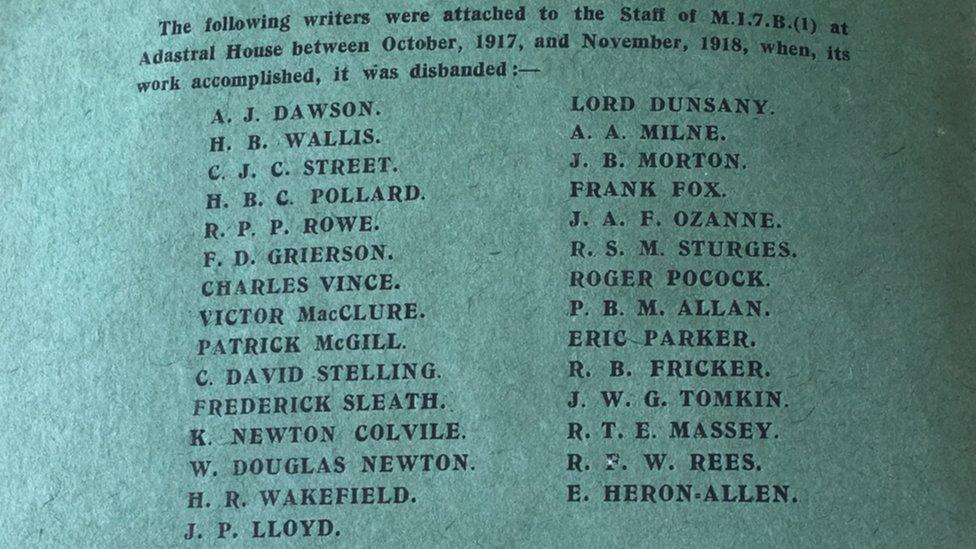
The Green Book of MI7b lists those writers who worked for the propaganda unit
When the Germans came up against the British battle positions, they were confronted with a solid wall of steel.
Outnumbered by three or four to one, the British battalions clung to their battered trenches in spite of every effort to dislodge them.
Wonderful tales are told of the valour of our men in face of these tremendous odds. Battalions, and weak battalions at that, fought with whole German divisions, and beat them off, not once but many times.
To take one case at random, it is related that a battalion of Royal Inniskilling Fusiliers held out all day against a division of German Guards in the battle zone.
Eleven times the Germans attacked and 11 times they were bloodily repulsed.
The twelfth time they succeeded, for only a poor remnant of the Irishmen were left to hold the line, but these Irishmen stayed there by the bodies of their dead comrades, and not a man of them retired.
All day and all that night the fight swayed up and down the battle zone, but it was not until the afternoon of the 22nd that the Germans, by sheer might of numbers, burst through our lines at Poeuilly, Beauvois and Vaux outside of St Quentin.

Stories were relayed of heroics in the trenches by soldiers

Individual tales of valour form the basis of this account of a battle at the Somme
The Munsters at Epehy
...This is the tale of how an Irish Battalion held out in front of Epehy, a village set on a hill, due South of Gouzeacourt.
... For six hours their trenches were lashed with a pitiless hail of shells. At 06:00 [BST], when the guns had done their work, the German infantry advanced through the mist.
But it was no demoralised enemy that confronted them. Dazed men manned their broken parapets, and mowed down wave after wave of the attackers as they swarmed over No Man's Land.
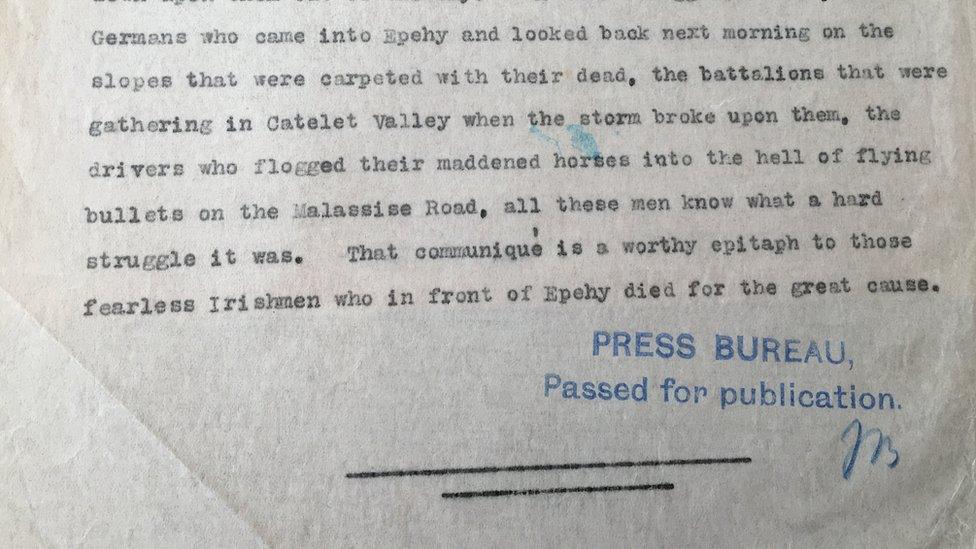
Typed documents were stamped when approved for distribution to the press
Strange tales filtered back through the fog, of bombers who hurled their bombs amongst the advancing Germans to the end, of infantrymen who charged with the bayonet when their last round had gone, of machine gunners who fought until they fell dead across their smoking guns.
... German airmen found them, and, flying low overhead, swept the trench from end to end with their machine guns. But they suffered for their daring.
One fell a victim to a Lewis Gun, and a man of "C" Company taking careful aim at another as it swooped down upon him, killed the pilot with a single shot from his rifle, and brought down the machine in a chaos of wreckage to the ground.
- Published9 April 2013
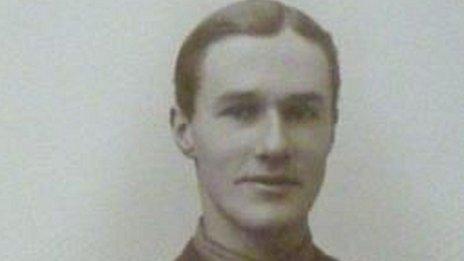
- Published9 April 2013
